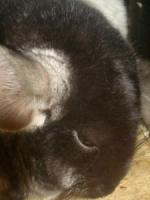|
News 2012-05-11 UNDERSTANDING POISONING OF PETS
By Dr. Natli
Coetzee
Various agricultural insecticide products as well as products used to control external parasites on animals are available on the market. A lot of these products contain organophosphates or carbamates as active ingredients (the poison).
Carbamates and organophosphates are related toxins that affect the nervous system of humans and animals, interfering with conduction of impulses to the heart, muscles and intestinal tract.
APPEARANCE OF THE POISON
The most commonly perceived product to be used for malicious poisoning contains the active ingredient aldicarb/temik which is formulated as small black granules that resembles poppy seeds. However other granular products may resemble the aldicarb granules and in some cases differently coloured granules may be coloured black by criminals. These granules are tasteless with a very slight sulfur-like smell.
CLINICAL SYMPTOMS OF POISONING
Foaming at the mouth or drooling of saliva Muscle tremors Vomiting Diarhoea – often jelly like but not always Difficult breahing Seizures (as in epilepsy) Weakness Paralysis Slow heart rate Small pupils NB! Not all of these signs might be present and non of these signs as a single signs is diagnostic for poisoning, it is the total picture that counts!
HOW TO HANDLE A SUSPECTED POISONED ANIMAL
Human contact with the poison (bait) itself, the animal’s vomit or diarhoea can lead to human intoxication. Wrap the animal in a blanket as to avoid direct potential contact and also it will keep the animal warm. Use rubber gloves and wear glasses (even sunglasses) as the poison can be absorbed from your eyes, skin or inhalation of dust from the contaminated soil. Any skin coming into contact with the poison should be washed immediately with soap. Get your dog to the vet as soon as possible, time is of the essence.
WHAT TREATMENT IS REQUIRED
Intensive veterinary treatment is required as soon as possible as both poisons usually result in rapid death.
* If you noticed your pet is still alert but not vomiting, give it dishwashing liquid or washing powder with warm water to make it vomit. Don’t spend a lot of time doing it as you need to get to a vet asap. *
If your animal has already
vomited or is not alert,
* If you have atropine at home you can administer 0.5mg/kg intramuscular to buy you time to get to the vet. * Do not make the mistake of thinking if your dog is looking better after the atropine injection you won’t need any further veterinary assistance as poisoning causes many problems in your animal that should be dealt with to maximize the chances of survival. * Animals can die a couple of days after successful treatment at first. If your pet survives and is sent home, it should continued to be monitored for further clinical symptoms as these toxins are taken up by the liver and then excreted via the biliary tract it could be recycled and reabsorbed from the intestines causing recurrence of clinical symptoms. If this occurs, the animal should be returned to the veterinarian immediately. * The poison causes fluid secretion in your dog’s airways, amongst other things, that causes your dog to drown in it’s own body fluids. The muscle spasms as well as paralysis of the breathing muscles lead to respiratory failure. The seizures causes brain damage. These are but a couple of things happening in the body and therefore your animal need further treatment to support the organ systems, sort out what is happening in the gut, bronchi, heart, muscles, nerves and brain. * Carbamate or organophosphate based products should not be used on affected animals for at least six weeks after recovery.
HOW TO CLEAN UP THE YARD Keep children and other pets away from the contaminated area! Search the environment for bait, which is usually meat of some sort with these small gunmetal granules in it. Always wear rubber gloves, long sleeves and pants, closed shoes and glasses when cleaning up the poison. - Soil: moisten the soil with water to prevent dust forming when scooping up the contaminated soil. - Place the soil in a thick plastic bag. - Use a spade to pick up all the vomit and diarhoea from the animal/s and place it in the plastic bag - Dig a hole at least 1 meter deep and not close to a water source - Add lime (landboukalk) to the soil in the plastic bag before covering up the hole - If small amounts of poison cannot be collected from the soil then lime can be added to the soil to help the toxins to break down faster, please note that the plants most likely will die from such a high Ph in the soil - If there are edible plants growing in that soil, DO NOT consume any of it as the toxins are taken up by the plants. - Cement: wash the cement off with dishwashing liquid (not bleach or pool acid), these granules are not very water soluble so rather try and brush the cement clean into - Make sure the water (contaminated with poison) do not run off into the public sewer system or any waterway. - Lawn: mow the lawn so that loose lying granules can be collected by the lawnmower and then correctly disposed of. - In cases of severe contamination the services of a qualified de-contamination organization should be utilized to clear the respective areas and to dispose of contaminated materials at an accredited depot. - Clothingworn when cleaning up the toxins should be incinerated or washed in soap but that water should not end up in the normal sewerage but disposed of in a 1m deep hole away from water sources or off flow.
HOW TO DISPOSE OF DECEASED ANIMALS
The bodies of dead animals should be incinerated as incineration temperatures will destroy the toxin. If incineration facilities are not available the animal should be buried at least 1 meter deep, away from food and water supplies. Cover the body of the animal with lime or soda ash before covering with soil.
USEFUL CONTACTS:
Bayer CropScience Tel 011 921 5252 Bayer Animal Health Tel 011 921 5740
Tygerberg Poison & Drug information Centre 021 931 6129 Griffon Poison information centre 082 446 8946 South African Poison information centre SAP Crime stop 08600 10111 Rapid Spill Response 24Hr 0861 113 467 of 08001 1 RAPID Idexx Laboratories Pty Ltd 011 803 3001/2/3
|




